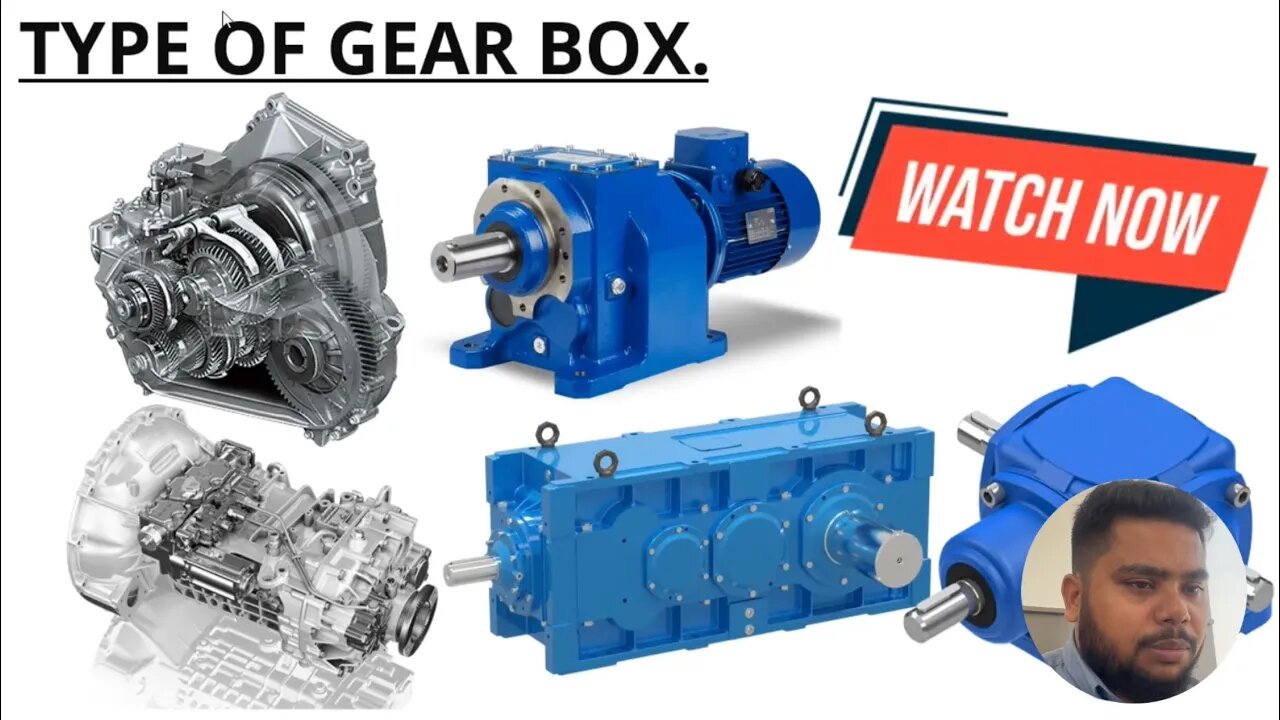Premium Only Content

Type of gearbox | Helical gearbox | Bevel gearbox | Worm gearbox | Planetary gearbox | #gearbox
There are several types of gearboxes, each designed for specific applications and operating principles. Here are some common types of gearboxes:
Manual Transmission: Manual gearboxes, also known as standard transmissions, require the driver to manually engage and disengage gears using a clutch pedal. These gearboxes are commonly found in cars and trucks. Manual transmissions come in various configurations, including synchronized, unsynchronized, and sequential.
Automatic Transmission: Automatic transmissions use a torque converter to automatically change gears without the need for manual shifting by the driver. They are commonly found in most modern cars and provide smooth, convenient shifting. Automatic transmissions often have multiple modes, such as Drive (D), Reverse (R), and Park (P).
Continuously Variable Transmission (CVT): CVTs use a belt and pulley system or a chain to provide an infinite number of gear ratios, allowing for seamless and continuous acceleration without distinct gear shifts. CVTs are found in many modern cars and some smaller vehicles.
Semi-Automatic or Automated Manual Transmission (AMT): These gearboxes combine the convenience of automatic transmissions with the ability for manual control by the driver. They do not have a clutch pedal but can be manually shifted using paddle shifters or buttons.
Dual-Clutch Transmission (DCT): Dual-clutch transmissions have two separate clutches, one for odd-numbered gears and one for even-numbered gears. This design allows for rapid gear changes and improved efficiency. DCTs are often used in high-performance and sports cars.
Manual Sequential Transmission: These gearboxes are typically found in racing cars and motorcycles. They allow sequential shifting without the need to operate a clutch pedal. Gears are selected in sequence with a lever or paddle shifter.
Planetary Gearbox: Planetary gearboxes use a set of gears arranged in a planetary or epicyclic configuration. They are compact and efficient, making them suitable for various applications, including automatic transmissions, industrial machinery, and robotics.
Worm Gearbox: Worm gearboxes consist of a worm (a screw-like gear) and a worm wheel. They provide high torque and are commonly used in applications where precise and slow-speed control is required, such as in conveyor systems and lifts.
Bevel Gearbox: Bevel gearboxes have bevel gears that transmit motion between shafts at an angle. They are often used in applications where the input and output shafts are not parallel, such as in differential gears in vehicles.
Helical Gearbox: Helical gearboxes use helical gears with slanted teeth to transmit power. They offer high efficiency and smooth operation, making them suitable for various industrial and automotive applications.
-
 LIVE
LIVE
Reolock
6 hours agoWoW Classic Hardcore | WE'RE BACK!!
201 watching -
 3:46:13
3:46:13
SynthTrax & DJ Cheezus Livestreams
8 hours agoShell Shock Live - The Scorched Earth Remake/Upgrade - 4pm PST / 7pm EST - RUMBLE GAMING
34.4K -
 2:56:57
2:56:57
Illyes Jr Gaming
4 hours agoBack to Black .....Ops 6 w/ ILLYESJRGAMING
21.3K1 -
 1:07:59
1:07:59
BonginoReport
7 hours agoBoston Mayor Defies Trump, Protects Illegals - Nightly Scroll w/ Hayley Caronia (Ep.115)
121K83 -
 40:45
40:45
Donald Trump Jr.
8 hours agoPeace by Peace: Solving One Problem After Another | Triggered Ep.268
69K61 -

FrizzleMcDizzle
4 hours ago $1.33 earnedRemnant 2 - Dark Souls-like Shooter?!
20.9K -
 LIVE
LIVE
FoeDubb
3 hours ago🏰KINGDOM MENU: 🎮DELTA FORCE PEW PEWS WITH THE BROS 👑CRGOODWiN & 👑BSPARKSGAMING DILLY DILLY!!
10 watching -
 11:43:31
11:43:31
GritsGG
15 hours agoWin Streaking! Most Wins 3390+ 🧠
67.1K -
 1:08:29
1:08:29
TheCrucible
7 hours agoThe Extravaganza! Ep. 24 (8/19/25)
85K26 -
 4:22:25
4:22:25
sophiesnazz
8 hours ago $0.07 earnedLETS TALK ABOUT BO7 !socials !specs
22.8K